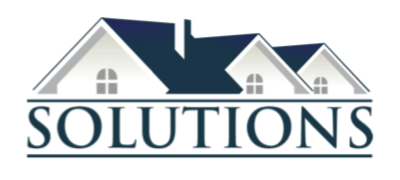Drones and Real Estate
More and more these days, if you’re outside in a lovely spot admiring the view you might notice a steady buzzing noise also accompanying the peace and quiet and wonder, “What the heck is that annoying sound?”
Welcome to the age of the drone – now, more than ever, they’re being flown by hobbyists and professionals alike, especially in the field of real estate.
Aerial photography from drones has created a heightened level of visual possibility that is hard to match, and almost a year after the FAA loosened its restrictions (in August 2016) it’s become even more commonplace. To date, the FAA reports the top two uses of commercial UASs are aerial photography (34 percent) and real estate (26 percent).
Drone pilots no longer need a FAA pilot’s license – just a remote pilot certificate that costs about $150 – and drones are now approved for commercial use. That has opened them up to a host of industries, but they’re especially appealing to the real estate world.
A boon for Sellers
For Sellers, this adds another level to the ways to show their homes on the local, national and international stages, and they’re starting to request that their agents look into this for them.
Drone photography is especially useful for large, unique properties that don’t photograph well from the ground. Videos filmed by drones can help Buyers get a better idea of what a property really feels like before they visit for a showing.
A drone can record video while flying along a twisting, wooded driveway to give Buyers a sense for what the approach to the house looks like and, as a closing shot, can take off from the home’s backyard and fly over the surrounding neighborhood to give potential Buyers a better view of the area.
They can also help give potential Buyers a way to investigate a new town, especially if they’ve never been there before. From the air, Buyers can see bodies of water, parks, golf courses and other landmarks and community amenities in a way they can’t by simply looking at a map or a satellite photo of the area, although taking a local hot air balloon ride is another option for the same effect.
What to know before hiring a drone operator
The FAA doesn’t require drone operators to have insurance, but it’s a good idea to have it anyway. Agents should check their brokerage’s insurance policy to see if it covers unmanned aircraft system (UAS) operation – the technical term for drones. If contracting with a professional drone operator, the NAR recommends making sure that operator is insured as well.
To obtain a remote pilot certificate with a sUAS rating, you must meet the following eligibility requirements: 1) be at least 16 years old; 2) be able to read, write, and understand the English language; and 3) be in a physical and mental condition that allows for the safe operation of the sUAS; 4) pass an initial aeronautical knowledge test.
Additional information regarding the eligibility requirements and application process for a remote pilot certification with a sUAS rating is available on the FAA’s website: FAA.gov – Fly for Work/Business – Becoming a Pilot (link is external).
A remote pilot certificate holder is required to pass a recurrent aeronautical knowledge test every 24 calendar-months.
The use of a visual observer (“VO”) is optional. If, however, a VO is used, the RPIC and VO must be able to effectively communicate at all times. The drone must be within the visual line of sight (“VLOS”) of the: 1) RPIC; 2) person manipulating the sUAS flight controls; and 3) VO. However, for operational necessity, brief breaks in VLOS are permissible as long as the individual who has broken VLOS is able to quickly resume VLOS.
Drones may only be flown during daylight hours. However, if it has appropriate anti-collision lighting visible for at least 3 statute miles, it may operate during civil twilight hours, which are defined as the period of time that begins 30 minutes before official sunrise and 30 minutes after official sunset.
(Please note that the above definition of civil twilight does not apply in Alaska. In Alaska, civil twilight is defined in the Air Almanac.)
Drone Etiquette
Before real estate agents or Sellers launch a drone to photograph a property, they should talk to their neighbors and get their permission as there are privacy concerns that should be addressed. Drones are quite noisy, and the neighbors might also want to clean up their yards, after they’ve given their permission, of course.
Next, drones aren’t allowed to fly above 400 feet and can’t weigh more than 55 pounds. Also, they aren’t allowed to fly more than 100 mph. You can download the FAA Safety App to look up realtime info as well as flying rules.
There are some places you should be aware of where UASs are strictly prohibited. These include stadiums and sports events, the District of Columbia, emergency response efforts such as forest fires and less than five miles from any airport. Operators must also keep their drones away from children and animals.
Benefits of drones
There are some great benefits for having the use of a drone:
* Encompassing aerial views of the entire property and land.
* Confirming condition of the roof and other property features that are difficult to access.
* What the drive home or the walk to school or work looks like.
* The neighborhood and surrounding area, including the home’s proximity to amenities
* Civic developments or local improvement districts (LIDs) that the buyer’s property taxes might contribute to
* Property maps and surveys

